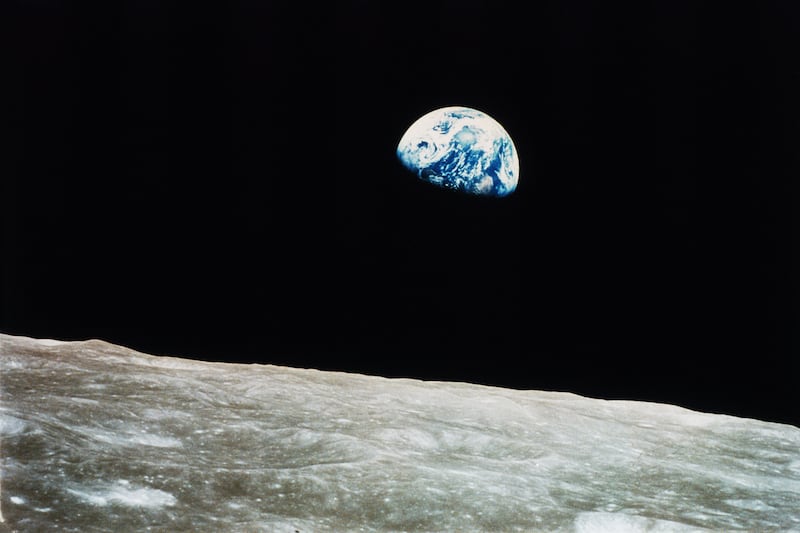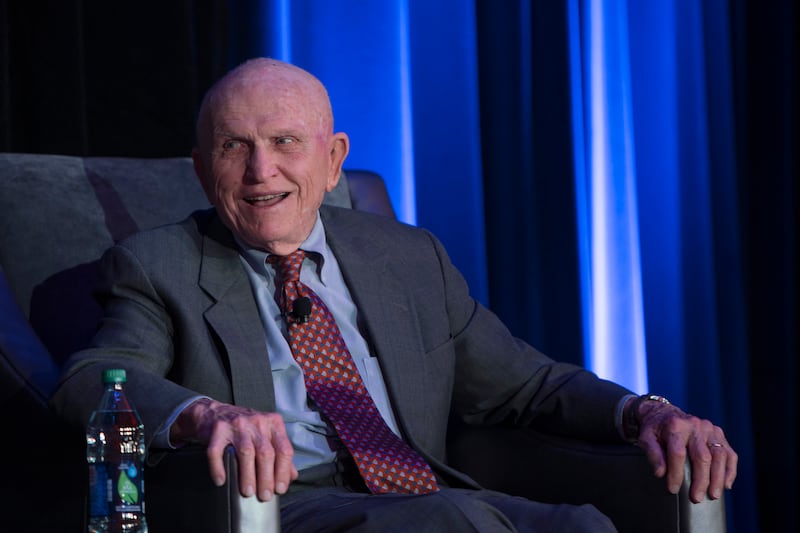Frank Borman, the astronaut who led the first Apollo mission to the moon in humanity’s historic initial foray off its home planet, cementing Nasa’s comeback from a deadly crash and giving space-age bragging rights to the US, has died aged 95.
He died on November 7th in Billings, Montana, after suffering a stroke at a retirement community, the Wall Street Journal reported, citing Jim McCarthy, a spokesman for the family.
During their Apollo 8 mission in 1968, Borman, James Lovell and William Anders travelled some 378,000km each way and completed 10 orbits around the moon, paving the way for the first touchdown on the moon by Apollo 11 months later.
Borman’s role as commander made him a central figure in what then was the boldest step of the US space program, a venture so unthinkable that when president John F Kennedy set a manned lunar landing as a US goal just seven years earlier, Nasa didn’t even know what course to take to get there.
‘There are times I regret having kids. They’re adults, and it’s now that I’m regretting it, which seems strange’
Cillian Murphy: ‘You had the Kerry babies, the moving statues, no abortion, no divorce. It was like the dark ages’
The Dublin couple who built their house in a week
John Creedon: ‘I was always being sent away, not because they didn’t love me, but because they couldn’t cope’
The three astronauts flew to within about 110km of the moon and became the first humans to gaze at its far side, which is always turned away from Earth. On their fourth pass, on December 24th, 1968, Anders snapped Earth appearing to “rise” over the greyish-white lunar surface as the crew marvelled at the view. “Take several of them,” Borman said.
Borman later recalled: “It was the most beautiful, heart-catching sight of my life, one that sent a torrent of nostalgia, of sheer homesickness, surging through me. It was the only thing in space that had any colour to it. Everything else was either black or white, but not the Earth. It was mostly a soft, peaceful blue, the continents outlined in a pinkish brown. And always the white clouds, like long streaks of cotton suspended above that immense globe.”
Anders, Apollo 8’s assigned photographer, captured the scene in colour in the mission’s Nasa-issued Hasselblad camera. One of the pictures became known as “Earthrise,” one of the most famous images of the space age.

Hours later, in a live telecast to Earth, the astronauts offered their impressions of the moon. “A vast, lonely, forbidding type of existence,” said Borman, who would later write in his memoir he had decided beforehand that Apollo 8, his second trip to space, would also be his last.
Besides setting up the eventual landing that Kennedy envisioned in 1961, and vaulting the US firmly past the Soviet Union in their Cold War space race, the six-day mission burnished Nasa’s image, which was still recovering from the 1967 Apollo 1 launch pad fire that killed three astronauts.
Famously gruff, Borman made a joking reference to the US-USSR rivalry in a radio chat with the US navy helicopter pilot who helped recover the Apollo 8 capsule in the Pacific.
“It’s not made out of green cheese at all,” Borman said of the moon, according to the Apollo history One Giant Leap. “It’s made out of American cheese.”
After retiring from the Air Force as a colonel in 1970, Borman took on a challenge in corporate America that was far less dangerous but still daunting: A rescue of historic, but troubled, Eastern Air Lines, which had been founded in the dawn of commercial aviation in 1926 and was once owned by first World War ace Eddie Rickenbacker.
Borman became senior vice-president for operations, completed Harvard Business School’s advanced management program and was named chief executive in 1975. He embarked on a cost-cutting campaign that included letting two dozen vice-presidents go, selling the corporate plane, imposing a one-year wage freeze and consolidating executive offices in Miami.
Eastern posted its first of four consecutive annual profits in 1976, Borman’s first full year in charge. He starred in an advertising campaign based on the slogan: “We have to earn our wings every day”. A Time magazine story in February 1977 was headlined, “Moon Man’ Turns Eastern Around”.
The good times didn’t last. Saddled with high costs even as airline deregulation lowered industry fares, Eastern lost $380 million from 1980 to 1985. Borman faced criticism for spending money on new, fuel-efficient planes and irked unions by pressing for wage concessions.
Borman resigned in 1986 when the airline was sold to Frank Lorenzo’s Texas Air Corp. Three years later, following more labour unrest, Eastern filed for bankruptcy protection. It shut down for good in 1991. In his 1988 memoir, Countdown, Borman said he hoped Eastern workers would remember him “as a man who tried to save their jobs by exchanging temporary adversity for long-range security”.

Frank Frederick Borman II was born on March 14th, 1928, in Gary, Indiana, the only child of Edwin Borman, who ran an automobile garage, and his wife, Marjorie.
At 5, just before the family relocated to Tucson, Arizona, Borman was treated to a ride with his father in a biplane. He recalled being “captivated by the feel of the wind and the sense of freedom that flight creates so magically.”
With money he earned from several jobs while attending high school, he took flying lessons at 15. He won appointment to the US military academy at West Point in the class of 1950 and chose to enter the Air Force after graduation.
A fighter pilot, he spent two years in the Philippines during the Korean War. He returned to West Point as an instructor in mechanics after obtaining a master’s degree in aeronautical engineering from the California Institute of Technology.
In 1960, Borman attended test pilot school at Edwards Air Force Base in California, then helped establish the curriculum for Nasa’s new Aerospace Research Pilot School. When Nasa sought its second class of candidates, for the Gemini and Apollo programs that followed the Mercury launches, Borman was accepted in the group that became known as the “Next Nine.”
The Gemini 7 mission, Borman’s first, tested both human endurance in space and the ability of two spacecraft to rendezvous in flight. Borman and Lovell spent 14 days in orbit, a record at the time, and on December 15th, 1965, their Gemini 7 flew just a foot apart from Gemini 6A. That demonstrated the precision manoeuvring that Nasa would need for lunar landings.
In the small fraternity of astronauts, “I was the most impatient and outspoken of them all,” Borman wrote. “I had a very simple code: If you can’t do your job, get the hell out of the way so I can do mine.”
He added, “I’ll concede I wasn’t the most popular astronaut for that very reason, but I didn’t give a damn.”
Borman’s wife., the former Susan Bugbee, died in 2021. They had two sons, Frederick and Edwin. – Bloomberg



